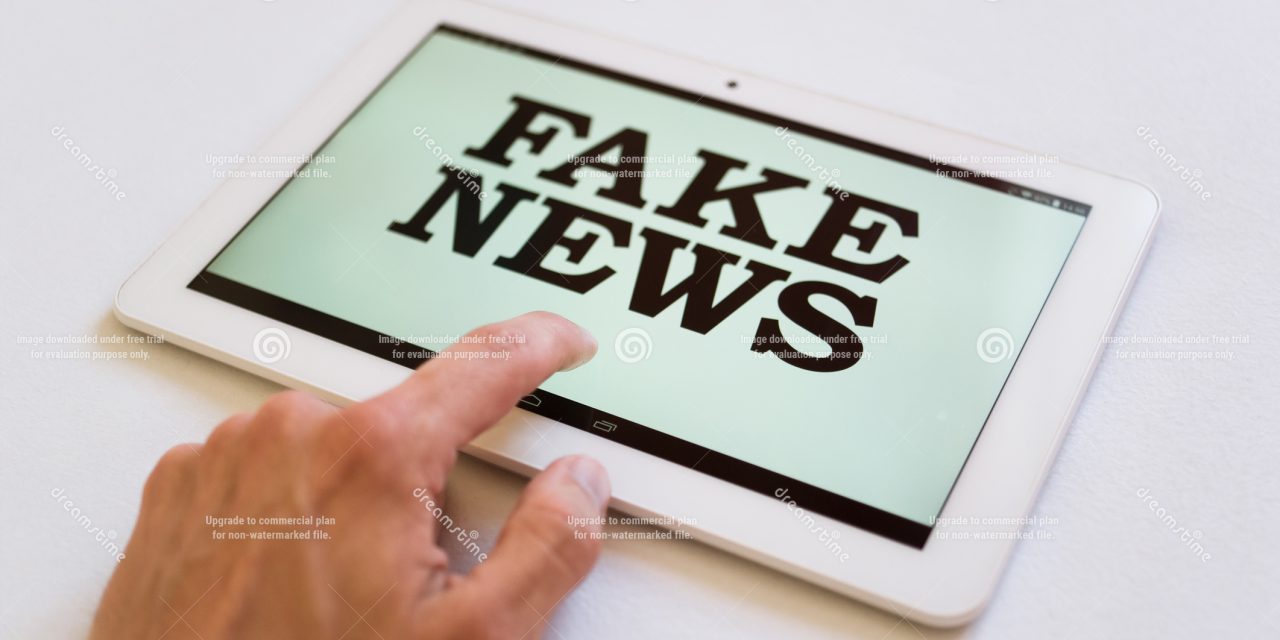Dr. Irini Katsirea is Reader in International Media Law and Co-Director of the Centre for Freedom of the Media (CFOM) at the University of Sheffield, UK.
The phenomenon of ‘fake news’, which came to the fore as a result of revelations about the commercial exploitation of fabricated news stories on Facebook, and allegations of Russian interference in elections by way of propaganda campaigns, has gained increased currency in recent times and sparked fears over the threat posed to democracy. In response to this perceived threat, EU Member States have been in the process of drawing their strategy.
Meanwhile, social media platforms and search engines have responded by cooperating with fact-checking organisations and by reducing the financial incentives for the production of ‘fake news’ content. It is a moot point whether such initiatives are capable of tackling the challenge of ‘fake news’. Well-established research on the so-called ‘illusory truth effect’ suggests that fact-checking is likely to further entrench erroneously held beliefs rather than eradicate them.
If the problem of ‘fake news’ is to be meaningfully addressed, it is important to agree on the meaning of this highly politicised concept. This post will explore the definition of ‘fake news’ before asking whether ‘fake news’ pose a threat that would justify its regulation. It will then examine whether the spreading of untruthful but not illegal information with intent to deceive, is protected under the right to freedom of expression.
What is ‘fake news’?
‘Fake news’ is not a homogeneous concept, but can manifest itself in different ways, spanning the whole spectrum, from fabricated content designed to deceive, to satirical publications aiming to mock. IMPRESS, in its submission to the Department for Culture, Media and Sport (DCMS) ‘Fake News’ Inquiry, defined ‘fake news’ as ‘the knowing and consistent publication of predominantly false information in the guise of news’. This definition captures most elements of the concept of ‘fake news’, but not necessarily the concomitant intent to deceive. Establishing such intent is key when trying to draw the line between ‘fake news’ and other more innocent forms of misleading information such as news satire. The term ‘fake news’ has been weaponised in recent times against mainstream media. This begs the question, which is the touchstone against which to measure media reliability, the antipode of ‘fake news’?
Does ‘fake news’ present a threat?
The effect of ‘fake news’ as well as the extent of this phenomenon are contentious. It has been argued that ‘fake news’ pose a threat to the integrity of democracy. Given the scale of the Facebook platform, even if a small percentage of its content consists of fake stories, and if such content only influences a minority of users, this might still be sufficient to sway election outcomes in marginal seats. However, findings from the rapidly growing area of research into ‘fake news’ consumption so far suggest a very limited impact of ‘fake news’ on political choices. Further research attesting the existence of ‘confirmation bias’ in the online environment, suggests that users would only be affected by ‘fake news’ if it matched their own predilections. More research needs to be carried out to authoritatively pin down the risks associated with ‘fake news’.
Does the right to freedom of expression protect the propagation of ‘fake news’?
The European Court of Human Rights does not protect all types of speech to the same extent. While political speech is at the apex of the hierarchy of expression, commercial speech receives the lowest level of protection, though still higher than, say, hate speech. An important incentive for the creation of ‘fake news’ stories is the promise of increased attention, which is rewarded by a greater share of the programmatic advertising pie. Does ‘fake news’ qualify as political expression or should it be categorised as commercial speech in view of the financial motivation involved?
Labelling ‘fake news’ as ‘quasi-commercial’ is risky as it could spill over to other types of protected political expression. These dangers are compounded by the fact that news media are not based on unassailable truth claims, but on socially negotiated processes of truth finding. Nonetheless, the pernicious effect of ‘fake news’ on the quality of public debate would have to be taken into account when assessing the margin of appreciation. A wider margin of appreciation afforded to states would not in itself justify the restriction of ‘fake news’ in the absence of a pressing social need. The ECHR case law on Holocaust and genocide denial claims suggests that the criminalisation of ‘fake news’ would hardly withstand the Art. 10 scrutiny.
These findings are supported by our examination of case law from Germany, the UK and the US. Despite their diverse constitutional traditions, these jurisdictions share a preparedness to curb untruthful expression only in specific settings when it does not contribute to debate in the public interest and when harm to private or public interests can be made out, a yardstick for this being the illegality of the content in question. This is also reflected in the new German Network Enforcement Law, which only fines platforms for hosting unlawful content. Existing laws already provide a powerful armoury to fight disinformation. Innovative solutions are needed for smart enforcement in the online environment that is respectful of users’ fundamental rights. Restraint with the suppression of ‘fake news’ is advisable not because of such news’ inherent value but because of the ancillary consequences of its restriction for protected truthful expression.
This post is based on the journal article published 31 January 2019: ‘“Fake news”: Reconsidering the value of untruthful expression in the face of regulatory uncertainty’, Journal of Media Law, DOI: 10.1080/17577632.2019.1573569. Source: https://www.tandfonline.com/eprint/jWm5gATg3xk4xq9tUvJm/full?target=10.1080/17577632.2019.1573569

